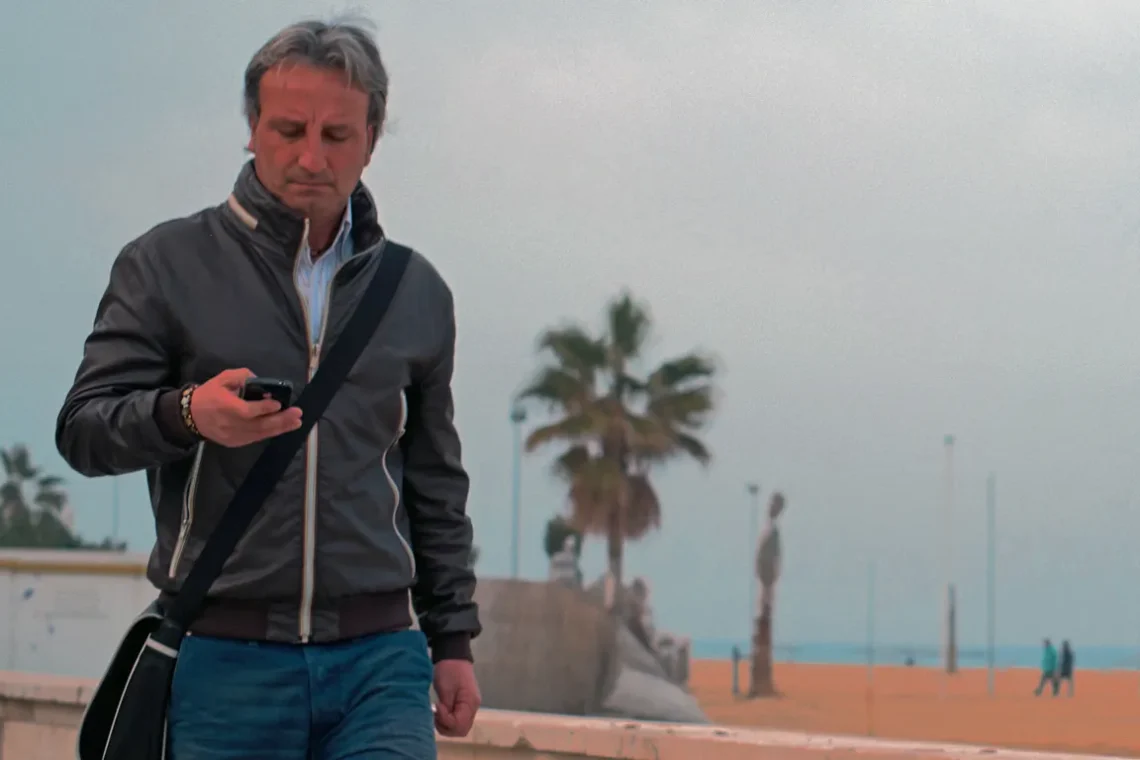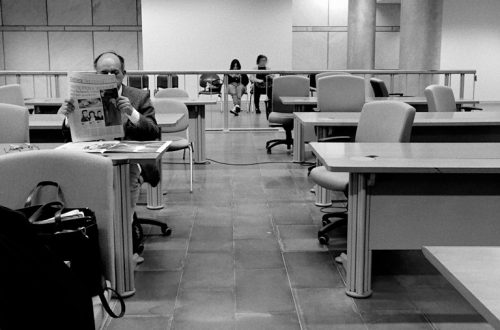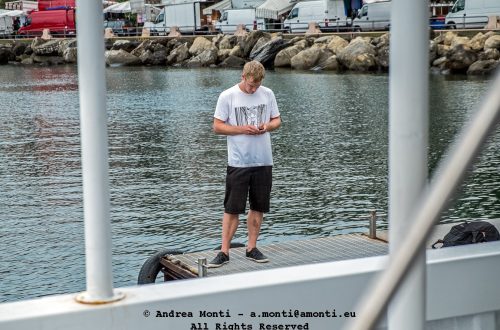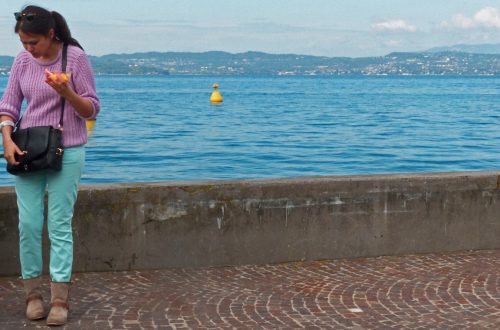
Lost in iPhone while the wind blows
A man walks along the seafront, head bowed, gaze fixed on the tiny black rectangle in his hand. His grip is firm, the frown on his forehead faint but telling. Behind him, palm trees bend slightly under the steady breath of a marine wind, and the horizon dissolves into a washed-out Mediterranean haze. It could be spring, or autumn—hard to say. The light is neutral, as if suspended.
This is the image of the now: digitally connected, sensorially detached. The tide rolls, the wind whispers, figures drift in the background—and he is elsewhere. Not here, not in the place his body inhabits. Not with the sea, not with the moment. His attention is consumed, absorbed, swallowed whole by the cold gravity of the screen.
It’s not judgment, but observation. Street photography is not moralistic. It records what is. And what is, in this case, is a snapshot of modern solitude. A moment where presence is fractured. Where the overwhelming force of a global network folds inward and turns even the open sky into background noise.
The photograph doesn’t shout. It waits. It suggests. And in doing so, it asks the viewer—quietly, insistently—what else might have been noticed, if only the wind had been louder than the ping of a notification.




